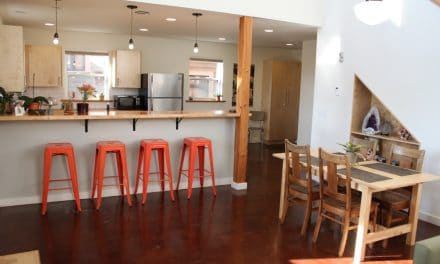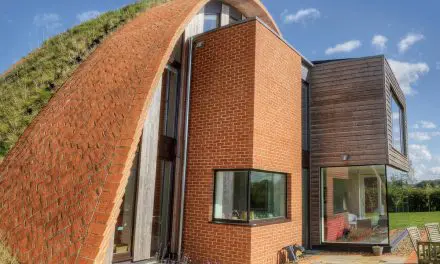By William Sundquist, Regional Sales Manager for Whitacre Greer
As our landscape keeps evolving with the built environment, the need for environmentally friendly outdoor building materials becomes more and more necessary for our communities. Landscapes have changed from natural open spaces that could absorb most rainfall events. Today, our communities divert large amounts of rainfall runoff and discharge into waterways, hopefully filtering it first. As this trend progresses over time, the ground is not able to absorb rainwater as it used to. Thus, increasingly disruptive flash floods plague urban and suburban spaces. Fortunately, an alternative to standard driveways and concrete patios is gaining increasing attention. Beautiful and functional, permeable pavers were developed to enhance our hardscapes and to help manage rainfall runoff and recharge our local water tables.
Permeable pavers, along with gravel and groundcover hardscapes, feature paver designs and joint materials that capture and retain rainfall when it falls on your property. Often the pavers themselves are not permeable, and stormwater trickles down through the joints into various layers of stone below. But where the pavers are permeable themselves and joined with aggregate (that is, crushed stone filling in the gaps), they can reduce stormwater runoff by nearly 1,000 gallons per hour. The wide variety of decorative styles, patterns, and textures suit any home from historic to traditional to modern.

Cement patios and drives—or hardscapes with pavers having mortared or tightly joined gaps—prevent water from penetrating through to the ground. Stormwater runoff then flows (hopefully) into storm drains. In the worst cases, stormwater rushes and pools onsite or downhill, damaging valuable landscaping or structures.
When our built-up communities come to grips with stormwater management (SWR), our outdoor living spaces can support a more sustainable environment.
Dine permeable!
In the suburbs of Chicago, a local restaurateur determined to resurface the alley area at the back of the restaurant, in order to invite outdoor dining. The owner chose permeable pavers so that diners could enjoy their meal with dry shoes. Plus the paver helps the community retain rainwater and reduce the burden on the stormwater management systems. This intimate dining area is a beautiful space that achieves multiple objectives.
Park permeable!
When constructing three stylish, net zero energy houses in Chattanooga, TN, the builder chose permeable pavers for the expansive driveway. Chattanooga requires SWR in order to retain excess stormwater runoff, discharging it at a slower rate. This prevents the city’s storm sewer system from becoming overloaded during rain events. Thus stormwater can be treated before it finds its way into the Tennessee River, Chattanoogs’s primary source of drinking water.
Because the properties are perched on a hill, building a retention pond or swale would have been very challenging or impossible. And not only are these super-efficient hillside homes stormwater-smart, they’re stunning assets to this community nestled in the foothills of the Appalachian Mountains.

Go green, literally
Many permeable paver systems encourage green grass or a native groundcover to spring up between the stones and allow rainfall to seep through into the ground. This more organic look (grow-through pavers? grassblock pavers?) offers stormwater management and often a more DIY-friendly configuration. Still, a qualified engineer should look at your site and approve the drainage strategy. If you’re seeking LEED accreditation, these (and other permeable pavers) offer points in Sustainable Sites, Water Efficiency, and Materials & Resources. But make sure the vegetation gets proper sun, can be maintained minimally over time, and the pavers or framing will stand up to the application. The result can be beautiful, cooling greenspaces that add color, texture, and fragrance to your site.
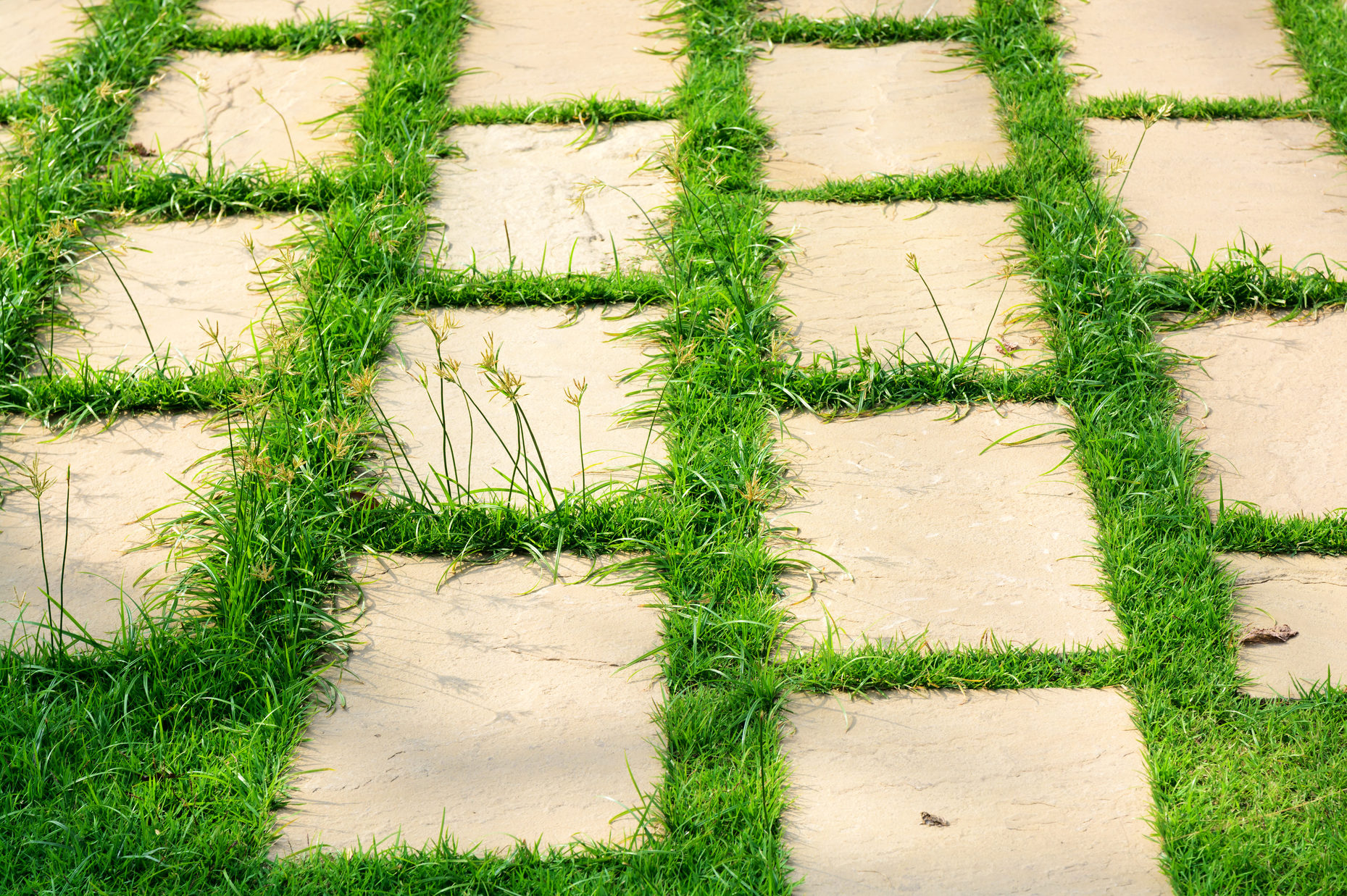
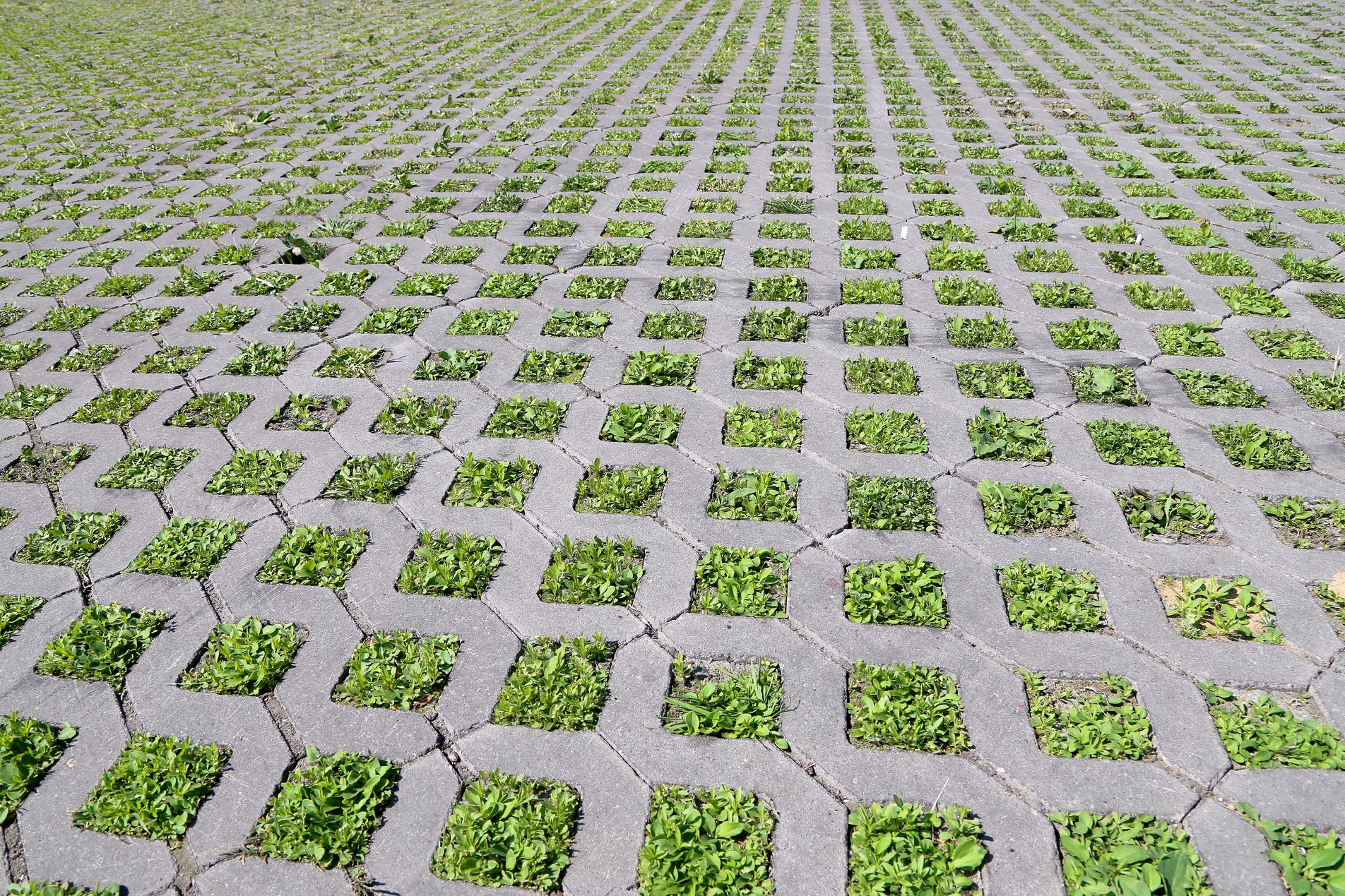
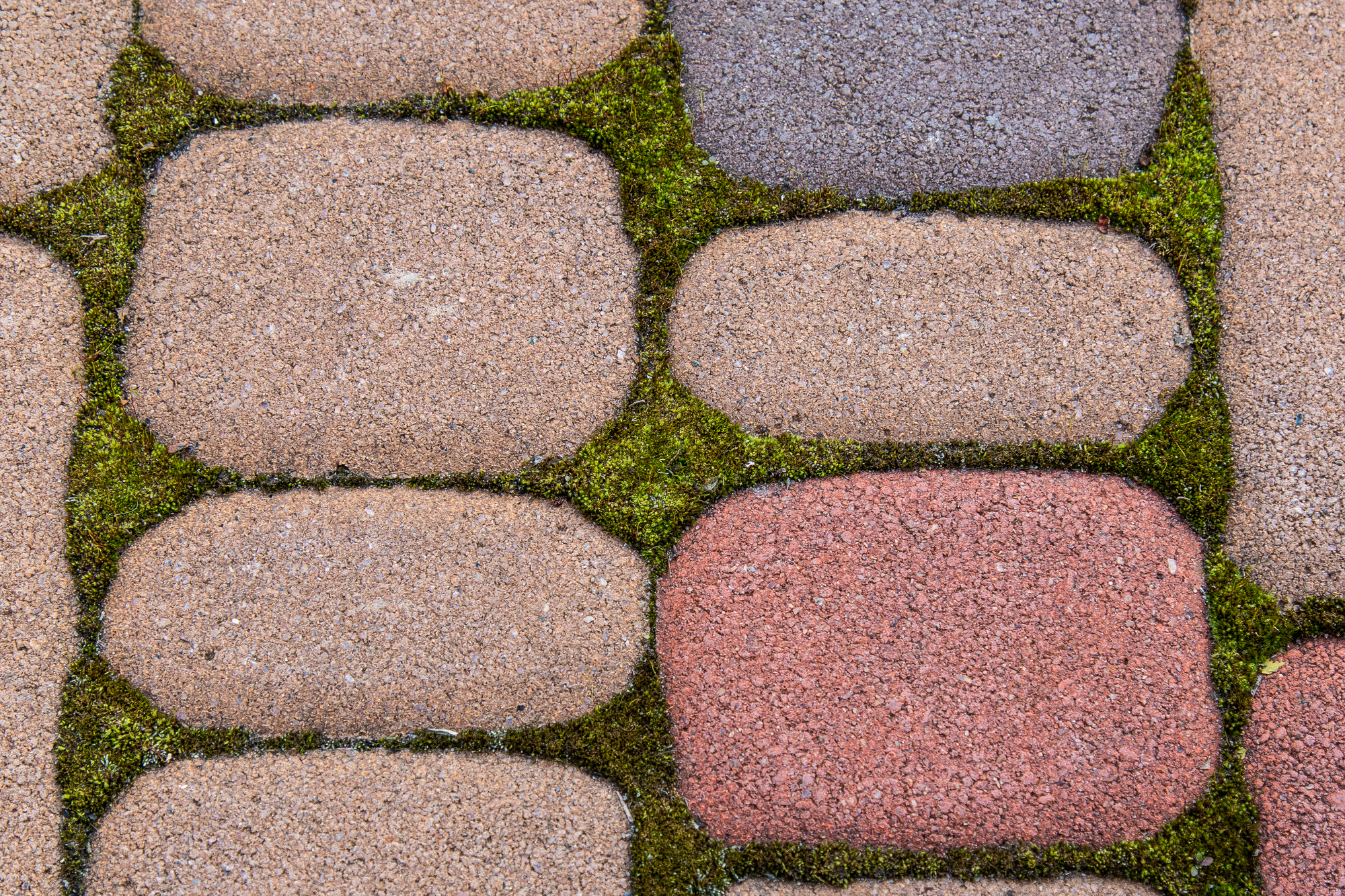
Prepare for permeable
It’s important to mention that these systems are far more expensive than pouring concrete and require important soil and bedding detail and preparation to allow rainfall to “exfiltrate.” We are re-creating the earth’s natural percolation and filtering processes, and these systems do come with an increased cost.
Even though there are additional costs, we must accept that SWR is a vital 21st-century construction risk, and must be included in a home’s infrastructure design. Think about a major intersection in your neighborhood that floods whenever a major rain event occurs. The water is sheeting off homes and roofs, driveways and parking lots, heading downhill with gravity. And as we develop more and more land, across the country, the likelihood of stormwater flooding increases. Extreme precipitation events (i.e., deluges) have become more frequent, and climate change models suggest this will continue.
What is the cost of inaction?
Construction practices have and will continue to create manmade waterways in our communities, causing flash flooding with heavy rainfall. When flooding occurs, and a major road is shut down, what is that cost? Trucks sitting idle, lost time in traffic jams, perhaps repairs needed for water damage. We all pay a price somewhere along the line for lack of adequate infrastructure. I encourage our elected officials in municipalities and states across the country to consider the risks and avoidable costs of poor SWR where we work, live, and play. A few extra dollars on the front end can save more (and help ensure safe drinking water) over time.

So whether you’re interested in a smoother commute, a driveway that helps reduce stormwater runoff in your neighborhood, or you just want to dine al fresco in an enticing grotto… you have a choice to make. Permeable pavers in your favorite style and pattern can make a difference in your local community. You might think of your lot as small and not doing much. But lot by lot, owner by owner, we can manage our stormwater runoff and ensure the future health of our waterways.

The author:
William Sundquist, FCSI is the Regional Sales Manager for Whitacre Greer clay pavers, responsible for the Southwest and West Coast markets. He earned his bachelor’s degree in public relations from Georgia Southern University in 2001, and since graduating he has worked in various architectural and management roles in the brick industry. Sundquist was elected Chair-Elect of the Construction Specification Institute in 2022 and has served on the CSI Board of Directors the past 4 years. He has also worked in various regional and chapter leadership roles since joining the Institute in 2004. In 2020, Sundquist was elevated to the Construction Specifications Institute College of Fellows for his contributions to the industry.
Additionally, he has contributed to the AECO industry as an allied board member with the East Tennessee Chapter of the American Institute of Architects, The University of Tennessee Chattanooga Interior Design School Advisory Board, and support roles with American Society of Interior Designers, Associated General Contractors of America, and Associated Builders and Contractors. Sundquist is also Second Vice Chair of the Brick Industry Association’s American Landscaping and Paving Council, and in 2022 was appointed to the newly formed Corporate Committee for the American Society of Landscape Architects.
Do you want your yard to be a welcoming oasis? Find more ideas on eco-friendly outdoor living.
Smart Water Devices to Make Your Home Greener
With smart water devices, you can prevent in-home floods, reduce your water use, and save. A lot.
Resilience Product Showcase: Make Your Home Safe & Sustainable
Catastrophic destruction due to weather and climate change are expected to increase in intensity and frequency. Find products to improve your home’s resilience.
10 Easy, Low-Maintenance Lawn Alternatives
The developing water shortage crisis in the U.S. has prompted many homeowners to turn to eco-friendly and low-maintenance lawn alternatives. And there are plenty of options—everything from clover and moss to ornamental grasses and flower beds, all sharing eco-friendliness as a common denominator.
Leaf Litter Is Good for Habitat—No Raking Needed
Pollinator gardening means less raking. This spring, let your leaves be. Your yard and your tiny, wild neighbors will thank you for the habitat and food.
A Tête-à-Tête With Women Leaders In Sustainability
With gender equality listed as one of the UN Sustainable Development Goals, we’re highlighting women leaders in sustainability who are ushering in a new era of green. Meet the women who are blazing a trail toward a healthier future through recycling paint, ecological planning and building, and helping businesses contain their environmental footprint.
Trees: A Powerful Tool to Fight Climate Change
Even in cities and suburbs, well-placed trees absorb carbon, and make your home and neighborhood more comfortable, healthier, and less-expensive to live in.


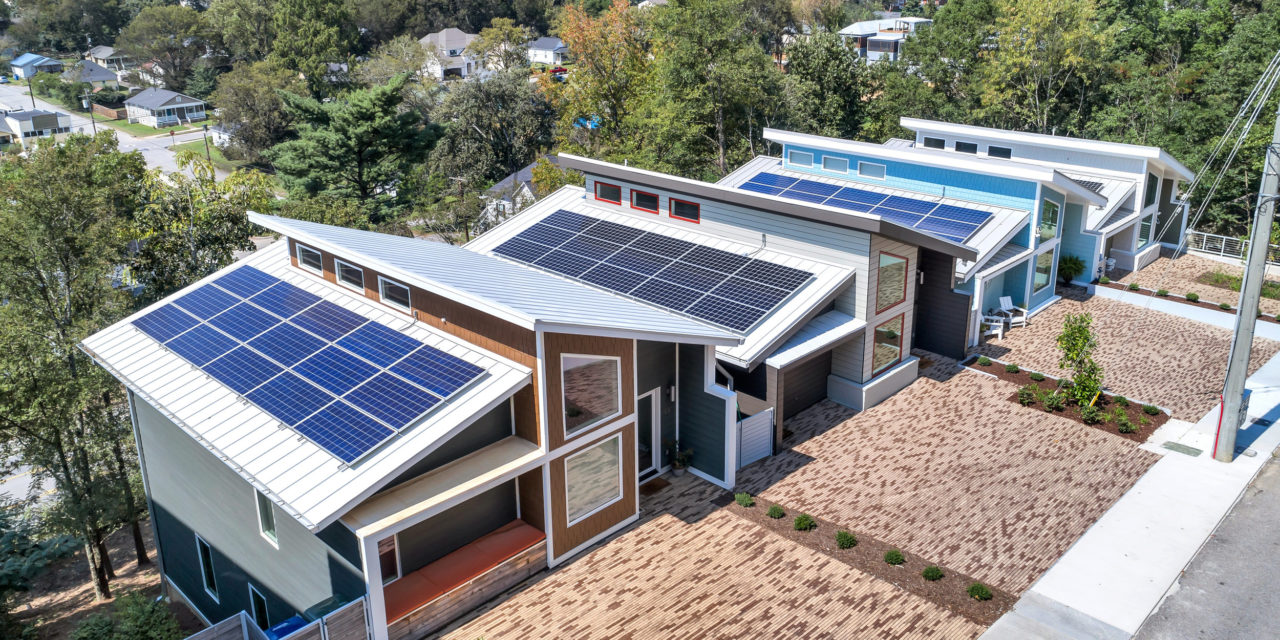







![10 Steps Toward a Zero Energy Home [Infographic]](https://elemental.green/wp-content/uploads/2016/04/cbfb-440x264.jpg)
